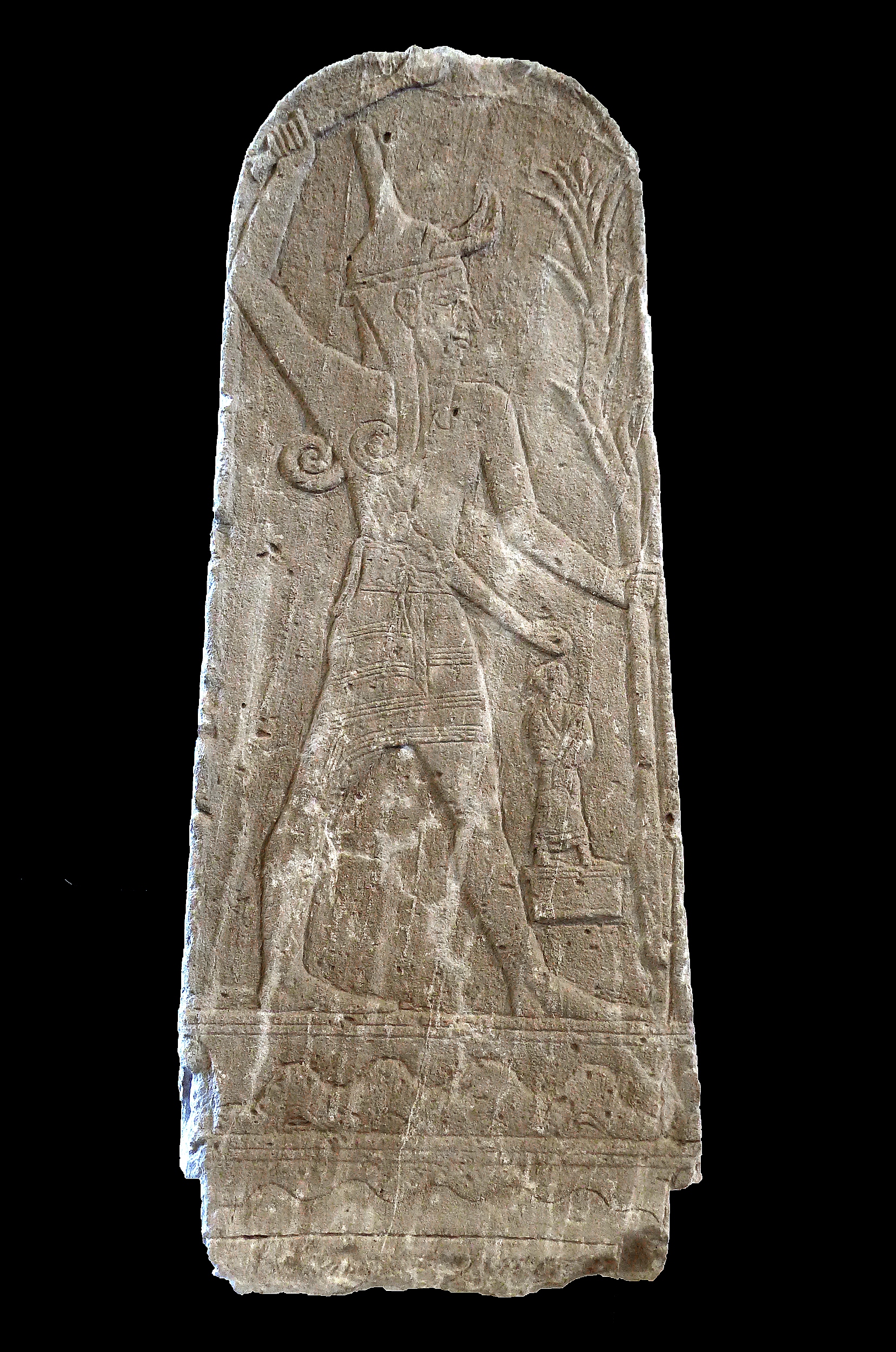Ugaritic God on:
[Wikipedia]
[Google]
[Amazon]
 The Ugaritic pantheon included deities of local origin, many of whom are also known from
The Ugaritic pantheon included deities of local origin, many of whom are also known from
Eblaite
Eblaite (, also known as Eblan ISO 639-3), or Palaeo-Syrian, is an extinct East Semitic language used during the 3rd millennium BC by the populations of Northern Syria. It was named after the ancient city of Ebla, in modern western Syria. Varian ...
sources from the third millennium BCE or Amorite
The Amorites (; sux, 𒈥𒌅, MAR.TU; Akkadian: 𒀀𒈬𒊒𒌝 or 𒋾𒀉𒉡𒌝/𒊎 ; he, אֱמוֹרִי, 'Ĕmōrī; grc, Ἀμορραῖοι) were an ancient Northwest Semitic-speaking people from the Levant who also occupied lar ...
ones from the early second millennium BCE, as well as Hurrian
The Hurrians (; cuneiform: ; transliteration: ''Ḫu-ur-ri''; also called Hari, Khurrites, Hourri, Churri, Hurri or Hurriter) were a people of the Bronze Age Near East. They spoke a Hurrian language and lived in Anatolia, Syria and Northern ...
and Mesopotamian
Mesopotamia ''Mesopotamíā''; ar, بِلَاد ٱلرَّافِدَيْن or ; syc, ܐܪܡ ܢܗܪ̈ܝܢ, or , ) is a historical region of Western Asia situated within the Tigris–Euphrates river system, in the northern part of the F ...
ones. The Ugaritic pantheon is considered better documented than other aspects of Ugaritic religion
The Canaanite religion was the group of ancient Semitic religions practiced by the Canaanites living in the ancient Levant from at least the early Bronze Age through the first centuries AD. Canaanite religion was polytheistic and, in some cases, ...
, such as the life of the clergy or the social context of various offerings. Over two hundred names of deities are known from Ugaritic texts
The Ugaritic texts are a corpus of ancient cuneiform texts discovered since 1928 in Ugarit (Ras Shamra) and Ras Ibn Hani in Syria, and written in Ugaritic, an otherwise unknown Northwest Semitic language. Approximately 1,500 texts and fragments ...
, though it has been argued the number of these who were an object of active worship was lower. Many of the names are binomial, and as such may refer either to a single deity and their epithet, to two deities syncretized into one, or to a closely associated pair.
The presence of Hurrian deities in the pantheon is considered one of the main differences between the religion
Religion is usually defined as a social- cultural system of designated behaviors and practices, morals, beliefs, worldviews, texts, sanctified places, prophecies, ethics, or organizations, that generally relates humanity to supernatural, ...
of the inhabitants of Ugarit
)
, image =Ugarit Corbel.jpg
, image_size=300
, alt =
, caption = Entrance to the Royal Palace of Ugarit
, map_type = Near East#Syria
, map_alt =
, map_size = 300
, relief=yes
, location = Latakia Governorate, Syria
, region = F ...
and those known from other areas inhabited by speakers of Northwest Semitic languages
Northwest Semitic is a division of the Semitic languages comprising the indigenous languages of the Levant. It emerged from Proto-Semitic language, Proto-Semitic in the Early Bronze Age. It is first attested in proper names identified as Amorite ...
, for example Canaan
Canaan (; Phoenician: 𐤊𐤍𐤏𐤍 – ; he, כְּנַעַן – , in pausa – ; grc-bib, Χανααν – ;The current scholarly edition of the Greek Old Testament spells the word without any accents, cf. Septuaginta : id est Vetus T ...
, understood by researchers of Ancient Near East
The ancient Near East was the home of early civilizations within a region roughly corresponding to the modern Middle East: Mesopotamia (modern Iraq, southeast Turkey, southwest Iran and northeastern Syria), ancient Egypt, ancient Iran ( Elam, ...
ern religions as the area between Byblos
Byblos ( ; gr, Βύβλος), also known as Jbeil or Jubayl ( ar, جُبَيْل, Jubayl, locally ; phn, 𐤂𐤁𐤋, , probably ), is a city in the Keserwan-Jbeil Governorate of Lebanon. It is believed to have been first occupied between 880 ...
and Gaza. It has been suggested that it is not possible to divide the gods worshiped into this city into separate Ugaritic and Hurrian pantheons.
The iconography
Iconography, as a branch of art history, studies the identification, description and interpretation of the content of images: the subjects depicted, the particular compositions and details used to do so, and other elements that are distinct fro ...
of most Ugaritic deities is presently unknown due to lack of inscriptions identifying their depictions.
Major deities
Minor deities
Hurrian deities
Demons
References
Bibliography
* * * * * * * * * * * * * * * * * * * * * * * * * * * * * * * * * * * * * * * * * * * * * * * * * * * * * * * * * {{refend * Lists of deities Mythology-related lists